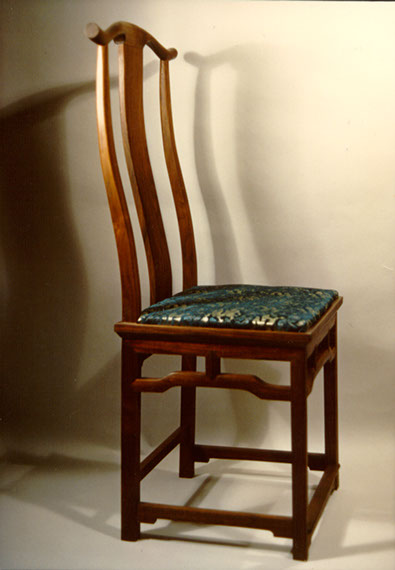
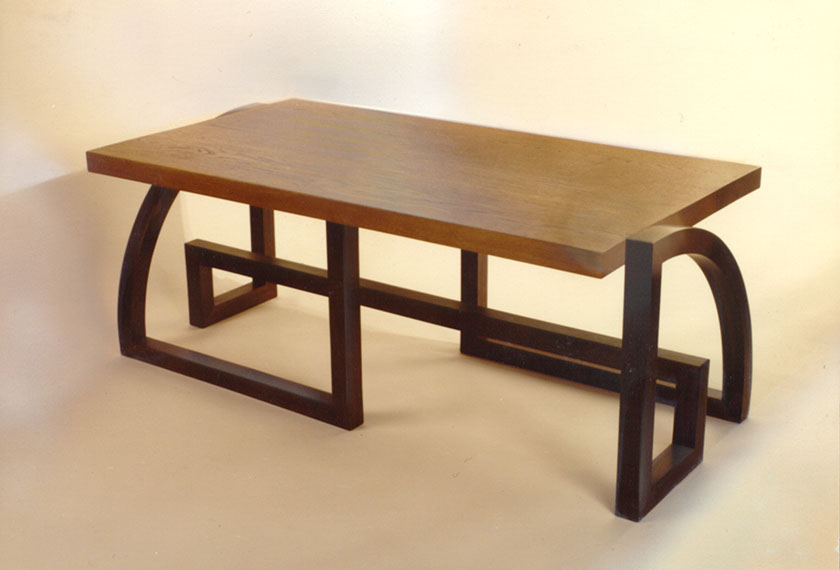
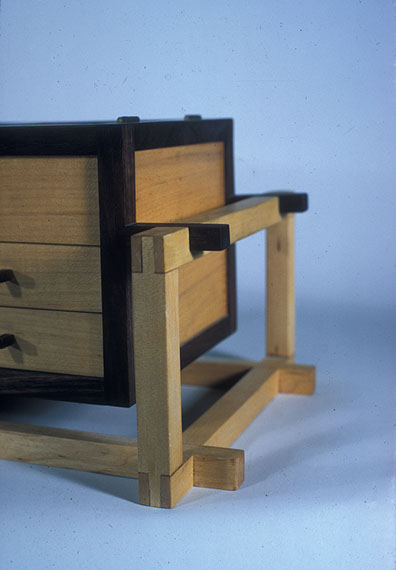

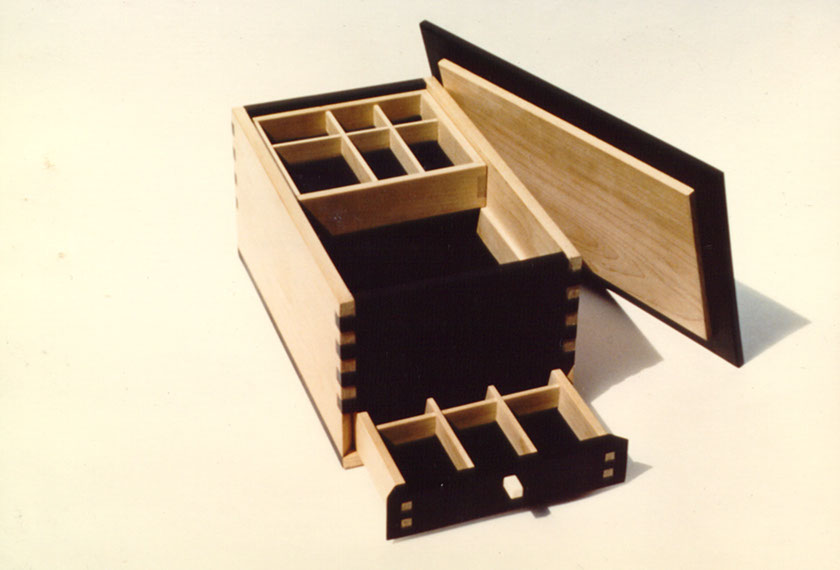
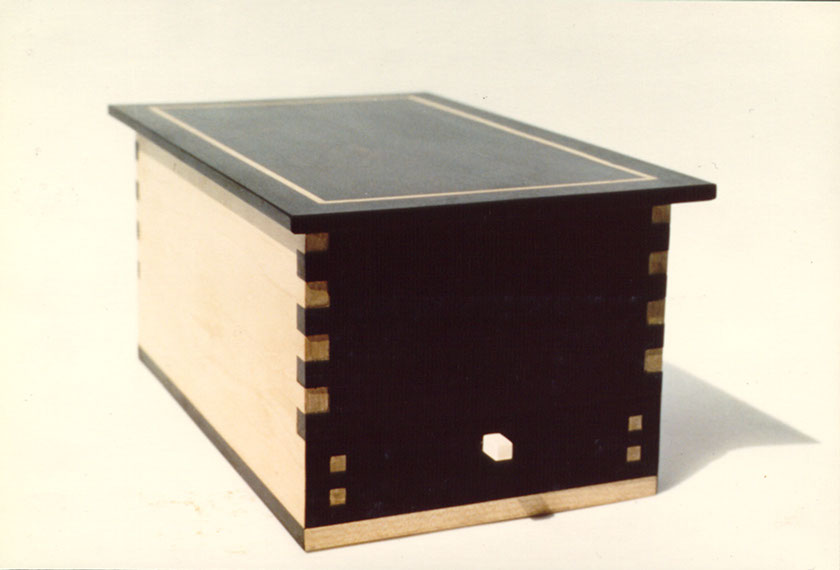
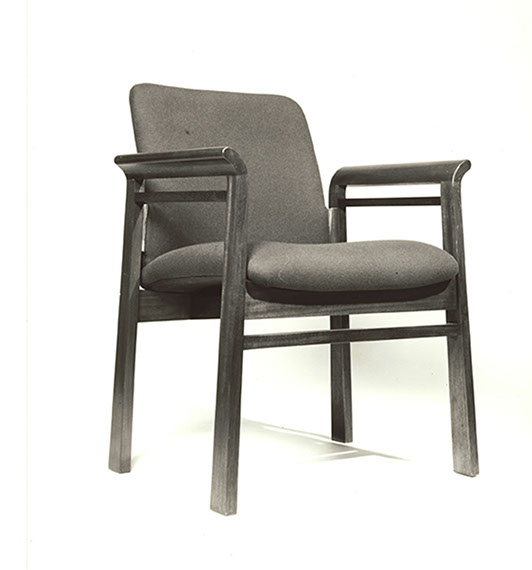







Chinese chair, 1973
Coffee Table, 1974
Jewelry Box 1 (detail), 1974
Bureau (detail), 1975
Jewelry Box 2, 1975
Jewelry Box 2, 1975
Batsford Chair, London, 1976 (with Spencer Dick)
<
>
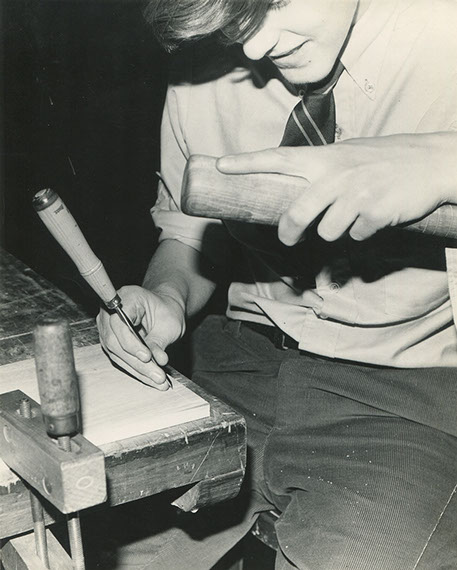
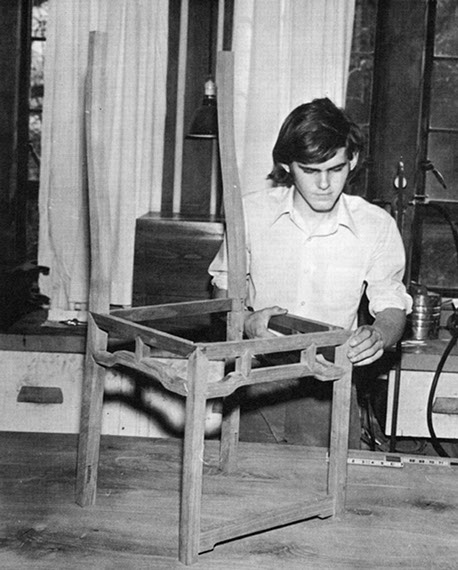
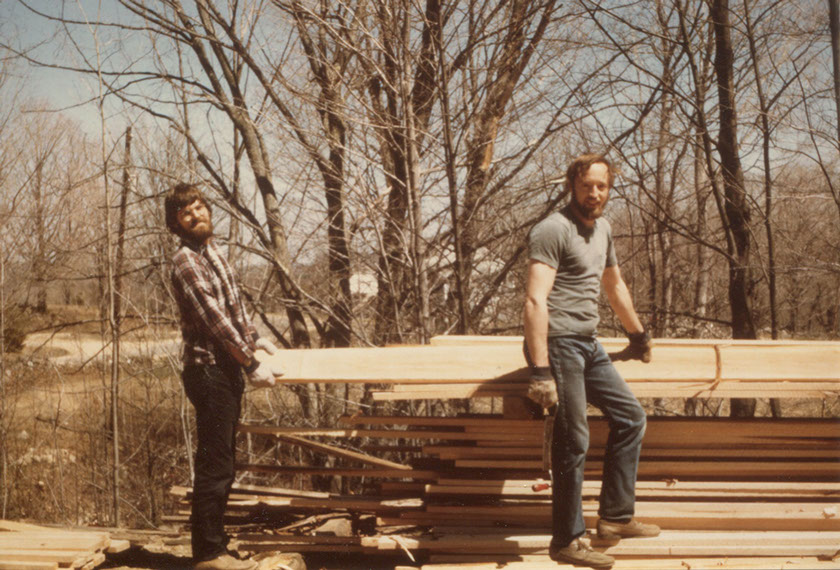
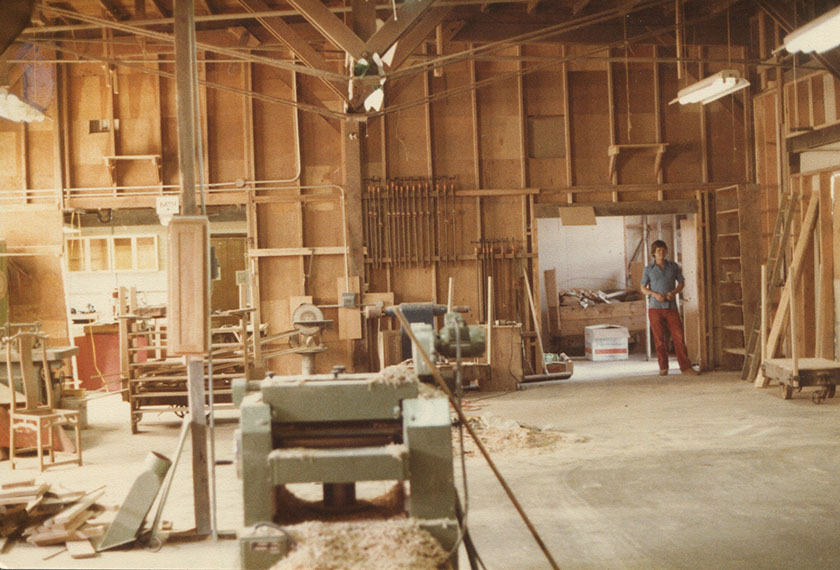




Stuart Emmons cutting dovetails, 1972
Stuart Emmons with Chinese chair he was making, 1973
Stuart Emmons (left) and Sam Bush at Potter's Mill, Gilmore, NH, 1978
Stuart Emmons in his woodshop - ISE Design & Woodworking, Hammond, Oregon, 1979
<
>

Gold Beach,
Oregon
HOME
CONTACT
STUART EMMONS
BUILDING PROJECTS
PLANNING PROJECTS
EMMONS DESIGN
HOMELESSNESS
HOUSING
NORTH COAST
VISIONS AND PLANS
SCHOOLS
Stuart Emmons Woodworking
"Woodworking was my foundation. I was going to be an architect from about age six, constantly building structures of wood and imaginary cities of sand, but in the 9th grade I met an amazing man, a master craftsman, formerly a Slovakian altar carver, who taught me about life, through wood. The work coming out of the school shop was exceptional, and soon, much to my delight, I was making significant works of high quality, far beyond what I had ever imagined possible for myself. Karl Pacanovsky taught me about ethics, morals, the importance of being true to oneself. How to draw, design, turn, cut, carve, join, plane, finish wood. How to cut a mean dovetail with amazing precision. How to connect the mind and hand and the rest of one's body into a singular act to make and craft things with resolve and determination.
Student: 'No one will see this.'
Karl: 'Yes, but that does not matter, for you will know it's there, and that is what is most important.'
After I graduated from high school, having completed my thesis: walnut Chinese chairs with traditional Chinese joinery, I went to the School for American Craftsmen in Rochester. There, I was exposed to the art of contemporary woodworking, from many countries, and I was surrounded by masters of woodworking and craft. And from there, to the London College of Furniture, where I learned about furniture design and design for manufacturing. I chose wood over architecture at that time because I wanted to build what I designed, and have full control over the craftsmanship. This gave me a deep insight into, and love for, the things which are made.
I worked professionally in wood before going back to architecture in my mid twenties. My architecture and planning work were enriched greatly by my wood background, and I can't thank Karl enough for the inspiration, guidance and can-do attitude that has lasted throughout my lifetime.
'Think, there must be a harder way to do it.' "